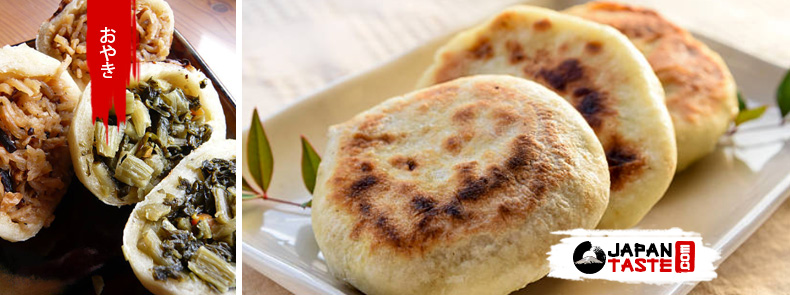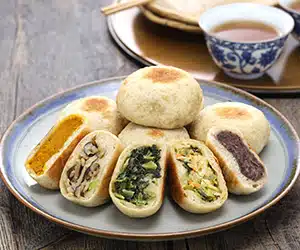If you’re a fan of Japanese cuisine or looking to expand your culinary horizons, look no further than delicious おやき oyaki. These little morsels are little-known treasures of traditional Japanese cuisine, offering an explosion of unique flavors in every bite. In this article, let’s dive into the world of oyaki, exploring their history, ingredients and ways to enjoy them.
Oyaki: Japanese pancakes from Nagano
Oyaki are buns filled with a variety of sweet and savory fillings, originating in the mountainous Nagano region of Japan.
They are often prepared with a dough made from wheat or buckwheat flour, water and salt, then stuffed with a multitude of flavors, from vegetables to mushrooms to sweet beans called anko.
The word “oyaki” derives from the local dialect, literally meaning “oven-baked”.
A range of oyaki ingredients and flavours
What makes oyaki so special is its wealth of flavors. As is often the case in Japan, toppings vary with the seasons and regional preferences, offering a variety of mouth-watering combinations.

Common toppings include gobo (burdock root), kabocha (Japanese pumpkin), shiitake mushrooms, koshi-an (sweet bean paste), eggplant and much more. Each bite takes you on a journey through the authentic flavors of Japan. You can enjoy textures that are both crisp and chewy.
Oyaki preparation and cooking at a glance
Oyaki preparation varies according to ingredients and family tradition. Generally, the dough is kneaded and left to rest, while the fillings are prepared and seasoned with miso paste, shoyu soy sauce or mirin, depending on the recipe.

Once the toppings are ready, the dough is rolled out into circles, the toppings are placed in the center, then the dough is carefully sealed to form a small pouch. The oyaki are then steamed, boiled, fried, baked or grilled until cooked to perfection.
The cooking method is similar to that of gyoza, the Japanese ravioli.
Oyaki tasting and accompaniments
Oyaki are eaten in a variety of ways in Japan. They can be served hot or at room temperature, depending on your preference, often accompanied by Japanese green tea. They’re perfect as a snack, a light meal or even as an accompaniment to a more substantial meal. Some prefer to dip them in soy sauce for a savory touch, while others enjoy them plain to take full advantage of the filling’s flavors.
Today, oyaki continues to thrive as Nagano’s signature traditional dish, attracting visitors from all over the country and the world. They offer not only a unique taste experience, but also a window into the history, culture and creativity of this mountainous region. So, whether you’re a culinary traveler or simply in search of new flavors, oyaki is a journey you won’t regret taking.






